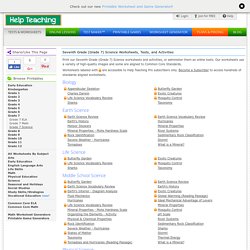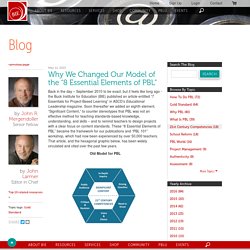

Why It's So Hard for Teachers to Take Care of Themselves. Australian education websites - FTfs. A Gentle But Powerful Way To Increase Learning, Motivation, And Independence - Smart Classroom Management. So you teach this great lesson.

Your students are really into it. They’re listening and participating. Their eyes are bright and inquisitive. They pass all your checks for understanding with flying colors. But as soon as you finish and give the signal for them to practice what they’ve learned independently, only a few get right to work. Some students look around the room, unsure of how to begin. You set them up for success, take them right to the edge of learning . . . but there they stand, frozen. So you do what you have to do. You do for them what you know they can do for themselves.
Yet still, progress is slow. Printable Seventh Grade (Grade 7) Science Tests, Worksheets, and Activities - K-12. Print our Seventh Grade (Grade 7) Science worksheets and activities, or administer them as online tests.

Our worksheets use a variety of high-quality images and some are aligned to Common Core Standards. Worksheets labeled with are accessible to Help Teaching Pro subscribers only. Become a Subscriber to access hundreds of standards aligned worksheets. Biology Earth Science Life Science Middle School Science Physical Science.
Home - Scootle. Home - Scootle. Classroom games/brain breaks. Worksheets and Lesson resources. Multiple choice questions. Andrewharvey42. 30 Techniques to Quiet a Noisy Class. One day, in front 36 riotous sophomores, I clutched my chest and dropped to my knees like Sergeant Elias at the end of Platoon.

Instantly, dead silence and open mouths replaced classroom Armageddon. Standing up like nothing had happened, I said, "Thanks for your attention -- let's talk about love poems. " I never used that stunt again. After all, should a real emergency occur, it would be better if students call 911 rather than post my motionless body on YouTube. I've thought this through. Most teachers use silencing methods, such as flicking the lights, ringing a call bell (see Teacher Tipster's charming video on the subject), raising two fingers, saying "Attention, class," or using Harry Wong's Give Me 5 -- a command for students to: Focus their eyes on the speaker Be quiet Be still Empty their hands Listen. There is also the "three fingers" version, which stands for stop, look, and listen. Lesser known techniques are described below and categorized by grade bands:
Year 11. PBS LearningMedia. If The World Were 100 People. PBS LearningMedia. CREATING AN INCLUSIVE CLASS CULTURE – PRACTICAL TIPS FOR TEACHERS - Starting With Julius. By *Dr Robert Jackson and Catia Malaquias The 2016 Australian school year is about to start and teachers in regular mainstream classrooms will be busy planning and preparing teaching materials, including differentiated curricula materials for students with disability allocated to their class.

But just as important as applying universal design and differentiated instruction is creating and maintaining an inclusive culture for the class … a culture in which every student feels welcomed and included both as a learner and as a valued peer. The research demonstrates that an inclusive class culture is conducive to maximising academic, independence and social outcomes for students with and without disability. Here are some practical tips for teachers trying to create or improve the inclusiveness of their classroom. DON’T UNDERESTIMATE YOUR STUDENT. Creating an inclusive class culture is fundamental to the long-term outcomes of all your students, in particular your students with disability. Why We Changed Our Model of the “8 Essential Elements of PBL” Back in the day – September 2010 to be exact, but it feels like long ago - the Buck Institute for Education (BIE) published an article entitled “7 Essentials for Project-Based Learning” in ASCD’s Educational Leadership magazine.

Soon thereafter we added an eighth element, “Significant Content,” to counter stereotypes that PBL was not an effective method for teaching standards-based knowledge, understanding, and skills – and to remind teachers to design projects with a clear focus on content standards. These “8 Essential Elements of PBL” became the framework for our publications and “PBL 101” workshop, which had now been experienced by over 50,000 teachers. That article, and the hexagonal graphic below, has been widely circulated and cited over the past few years.